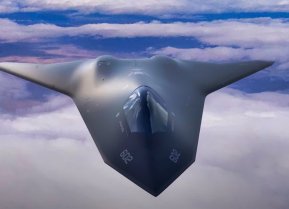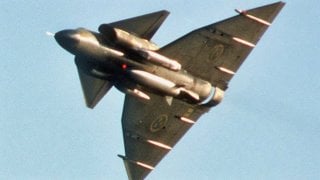The Saab 37 Viggen Fighter Had Just 1 Mission
The Saab 37 Viggen, a Cold War-era Swedish fighter, was designed to deter Russia and stands out for its innovative features. Named after "thunderbolt" and "tufted duck," it was Sweden's largest industrial project at the time, heavily funded and domestically developed.
Summary and Key Points: The Saab 37 Viggen, a Cold War-era Swedish fighter, was designed to deter Russia and stands out for its innovative features. Named after "thunderbolt" and "tufted duck," it was Sweden's largest industrial project at the time, heavily funded and domestically developed.
-Introduced in 1971, the Viggen featured an aft-mounted double delta wing with high-set canards for short take-offs and landings and supersonic speed.
-Powered by a modified Pratt & Whitney JT8D engine, it boasted a thrust reverser for short-runway landings.
-Although the Viggen proved reliable and capable, it was never exported and saw limited action, with its last retirement in 2005.
Saab 37 Viggen: Sweden's Thunderous Cold War Fighter
The Saab 37 Viggen is among what seems like almost countless Cold War fighters built to deter Russia in the sky if World War III ever took place. However, this plane is from a non-NATO nation and seems to be quite special:
The name Viggen, given to the Saab 37 aircraft, has two distinct meanings. Each, despite striking drastically different tones, are oddly appropriate. The first meaning, refers to askvigg, which today translates loosely to “thunderbolt” – but historically meant “thunderstones.” Thunderstone, or askvigg, is what the Viking age inhabitants of Scandinavia called the prehistoric stone axes that were occasionally excavated. The Vikings believed that Thor, the god of thunder, had sent the axes to Earth in lightning strikes conjured while he was hunting giants with his war hammer Mjolnir. The axes were believed to have magical properties, such as lightning protection. Indeed, the Saab 37 Viggen’s first nominal origin is flattering, apt, and epic. The second, more humble name, refers to vigg, the Swedish word for tufted duck.
What We Know About the Saab 37
The Viggen program began in December 1961 as Aircraft System 37. At the time, the program was the largest industrial undertaking Sweden had ever attempted, of course built during the Cold War when concerns about the Soviet Union were a major factor in building the plane.
Throughout the 1960s, Aircraft System 37 accounted for a whopping ten percent of all Swedish research and development funding. Sweden designed most of the system from the powerplant, ejector seat, reconnaissance systems, armaments, ground servicing equipment, and simulators – a daunting venture for a country like Sweden.
By 1963, Saab had settled on an aerodynamic design for their new jet. The design was radical, featuring an aft-mounted double delta wing plus small, high-set canards. The canards were especially distinct, and the Viggen would be the first mass-produced airplane to ever feature canards. Canards have since come to be relatively common, appealing in modern aircraft like the Dassault Rafale, IAI Kfir, Eurofighter Typhoon, and Saab’s newest offering, the JAS 39 Gripen.
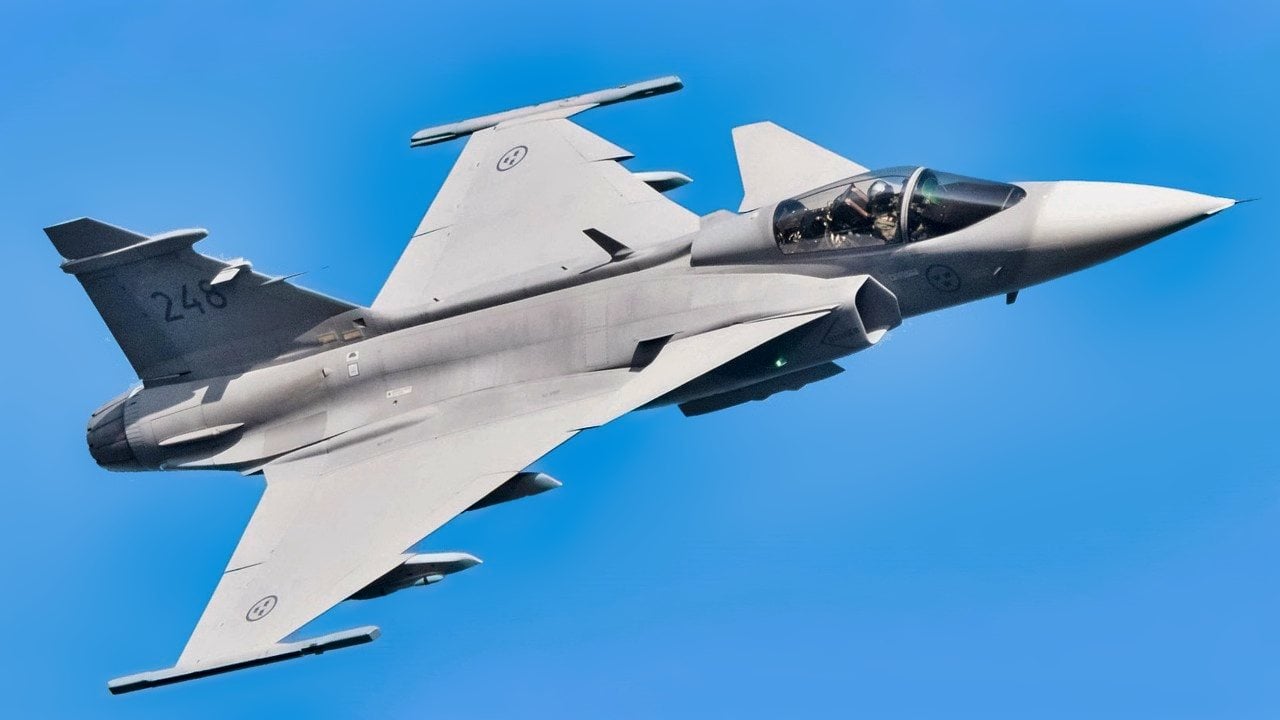
In the Viggen, the inclusion of the canards, along with the delta wings, were to satisfy the various, often conflicting, program requirements set forth by the Swedish government. The jet was to be capable of short take-offs and landings (STOL), to enable operation from Sweden’s Bas 60 dispersal system, which repurposed reinforced public roadways as military airfields during war time. Additionally, the jet needed to be able to break the sound barrier, while also having high maneuverability (and low turbulence sensitivity) at subsonic, low-level flight.
The Saab 37 Viggen was designed to be an attack aircraft, rather than an interceptor, as the Saab 35 Draken already served as an adequate interceptor. Accordingly, Saab hoped to make the Viggen capable of low fuel consumption at high subsonic speeds, something with excellent range. Intending to build such an aircraft, Saab originally planned to power the Viggen with a single Rolls-Royce Medway engine. However, when the Medway engine development was canceled, Saab instead licensed the Pratt & Whitney JT8D engine, producing a modified version, the Volvo RM8. Whereas the original JT8D was used for commercial airliners, the RM8 was quite different from the source engine, featuring updated materials to allow operation at Mach 2 speeds, the addition of a Swedish-built afterburner, and a variable nozzle. The airframe also included a thrust reverse to help slow the aircraft down on landings (thus making short-runway landings possible). The thrust reverse could even be pre-set in the air to fire when the nose-wheel strut compressed upon landing.
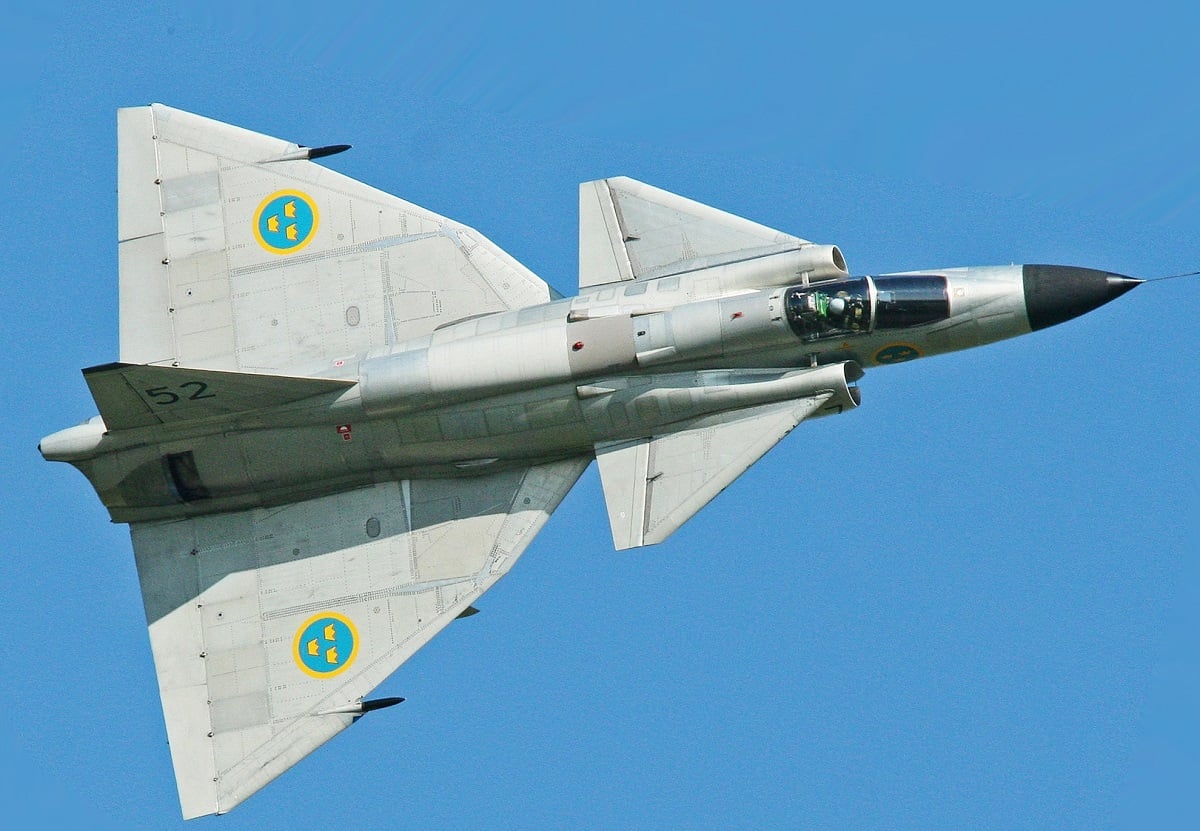
A Saab 37 Viggen prototype first flew in 1967, with Saab’s chief test pilot Erik Dalhstrom at the controls. After the prototype’s maiden flight, Dahlstrom described the new jet as easy to control. The international aviation press noted that Sweden had made fantastic progress in aerospace development.
By 1971, the Viggen was being delivered to the Swedish Air Force. In service, the jet proved reliable and safe – a relief given how complex and novel the airframe was. The finished product could perform, too. Capable of hitting 1,386 miles per hour, the Viggen could climb at 40,000 feet per minute and reach a service ceiling of 59,000 feet.
For armament, the jet carried one 30 mm Oerlikon KCA cannon with 125 rounds. For hardpoints, the jet had three under each wing, plus three under the fuselage.
While the Viggen was capable and innovative, it was never exported, and never saw much action (as Swedish jets never do). The Swedish Air Force began removing the Viggen from front line service in 1994, to make way for the new Saab JAS 39 Gripen. The last Viggen was formally retired in 2005.
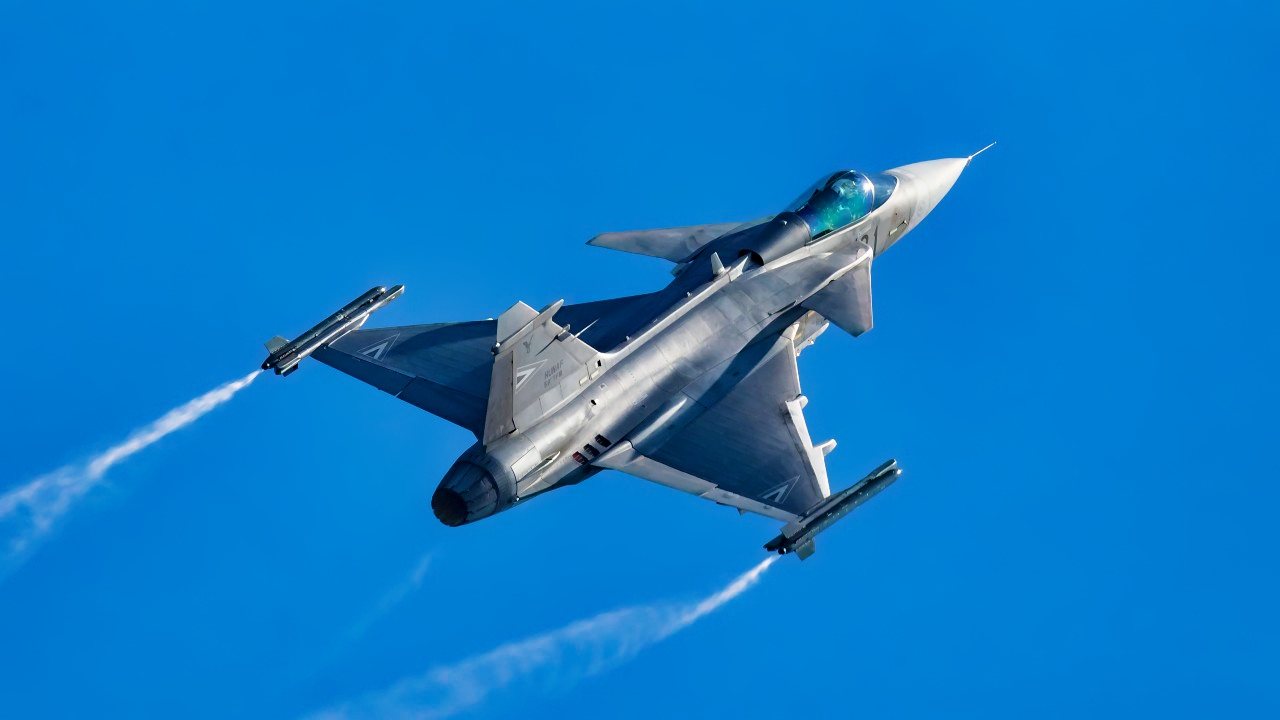
About the Author: Harrison Kass
Harrison Kass is a Senior Defense Editor with over 1,000 published articles. An attorney, pilot, guitarist, and minor pro hockey player, he joined the US Air Force as a Pilot Trainee but was medically discharged. Harrison has degrees from Lake Forest College, the University of Oregon, and New York University. He lives in Oregon and listens to Dokken. Follow him on Twitter @harrison_kass. Email the Author: [email protected].
All images are from Shutterstock or Creative Commons.
